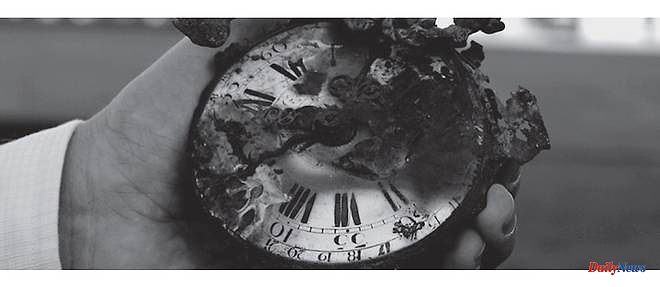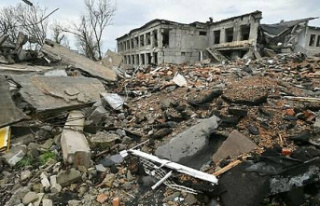Movements animating a watch; springs forming the beating heart of a caliber; mechanisms that seem endowed with life… Watchmaking language includes a number of formulas of this type which tend to give objects, if not a soul as Lamartine suggested, at least a living appearance. To the point of associating in people's minds the happy ticking of a good old tocante with the heartbeat of a human being. Everyone knows that the power reserve of a watch, whether mechanical or powered by a battery, is limited in time. A few hours, a few days, even a few years. But sometimes, it is other causes that stop the course of the hands and freeze them on the dial. It is precisely these reasons that a photographer has sought to bring together in a book which has just been published.
Signed by Luc Debraine, the book Timepieces is published by Éditions Noir sur Blanc. 29 €.
© Luc Debraine
Journalist, former director of the Swiss Camera Museum based in Vevey, exhibition curator and lecturer at the University of Neuchâtel, Luc Debraine masters all the technical aspects of shooting, but also the emotional springs of 'a photo. If for him color is life and reality, black and white softens things but also dramatizes them, as he declared in the Swiss magazine Le Temps. His book tells of a strange journey made over a period of twenty years. A long quest devoted to roaming the world, equipped with film, digital or disposable cameras, even mobile phones, in search of clocks or watches with the particularity of no longer telling the time. Or rather to display only one hour, for eternity. “Clocks that have stopped have no history,” he writes in his book. They are at the end of their springs or batteries, seized up or broken, disconnected or abandoned. They refer only to themselves, inert assemblies of mechanisms, dials and hands. They just don't turn round anymore, that's all."
In Detroit, USA, this clock dominates the entrance to a derelict building on Michigan Avenue. This building dating from 1924 housed the unemployment insurance offices for railway employees.
© Luc Debraine
But Luc Debraine wanted to go beyond appearances and frozen dials: "All the clocks stopped? he wonders. Not quite. There are rare ones that escape the flagrant offense of banality. They are preserved in their places of previous lives, when they still assumed their hourly function. They are also in museums, public buildings, in private homes. These clocks are literal timepieces. They keep a singular time, often difficult, fragile. That of a human or natural disaster, of a disappearance, of a revolution, of a work, of a flash of genius, of a good idea. They are sentinels of memory, ready to repel an invisible enemy, the eraser who after death inflicts a second death: oblivion”.
All the watches found in Hiroshima after the explosion of the atomic bomb that destroyed the Japanese city and its inhabitants on August 6, 1945 indicate the fateful time: 8:15 am. © Luc Debraine
Atlantic Ocean, sinking of the Titanic, April 15, 1912, 6:08 a.m. Buchenwald, camp liberation, April 11, 1945, 3:15 p.m. Hiroshima, atomic bomb explosion, August 6, 1945, 8:15 a.m. Bombing at Bologna train station, August 2, 1980, 10:25 a.m. New York, Twin Towers Collapse, September 11, 2001, 8:46 a.m. and 9:03 a.m. "So many dramatic events whose memory is carried by clocks, pendulums or petrified watches on a fateful hour", writes Luc Debraine. 50 of these timepieces found refuge in his book. Wars, violence and fatality are not the only culprits. Sometimes it's just the wind, a whim of nature or simply the passage of time that has stopped the race of hours and minutes, as in a process of self-destruction.
A legend has it that in winter, when the Italian lake of Resia is frozen, you can still hear the bells of the 14th century church ringing. However, they were removed from the bell tower in 1950, just before this valley was flooded to create an artificial lake. Similarly, the four dials of the square tower have been stripped of their hands. However, the north dial marks 6:30. In reality, this optical illusion is due to a deep incision in the stone. © Luc Debraine
“But are all those hours stopped really? From the meditations of Saint-Augustin to contemporary research in physics, nothing helps: time remains an enigma, continues Luc Debraine. Physicist and philosopher of science Etienne Klein agrees: "It is possible that time does not exist. Or that there are several categories of time. Author of the book's preface, Étienne Klein offers his own analysis: "The stopped watches and clocks basically show the past as it is: an impregnable fortress, a reality impossible to erase or modify for our way. By staring at them, one better perceives what Vladimir Nabokov called the "transparency of things that makes their past shine". To meditate.
Timepieces, by Luc Debraine. 124 pages. 50 photographs. Black on White Editions. €29.












